10 Companion Plants for Kale (With Pictures)
-
Pete Ortiz
- Last updated:
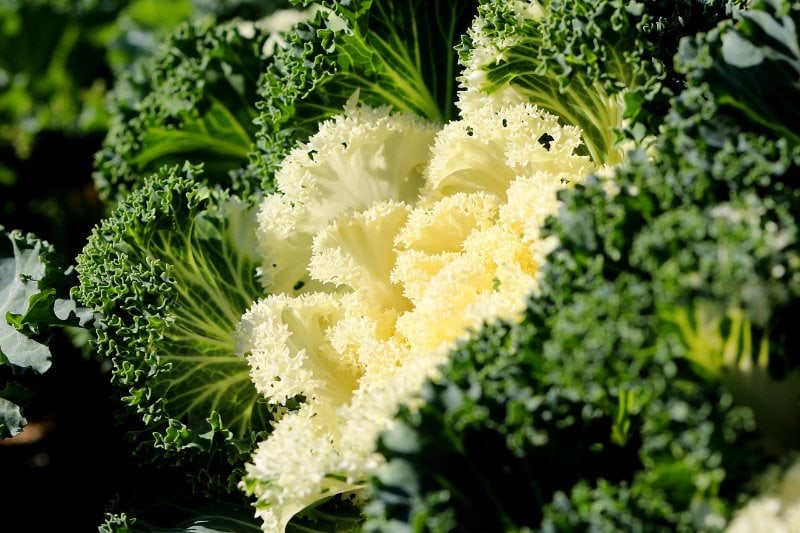
There is more than sufficient evidence out there that attests to the fact that eating vegetables daily is more than helpful in building and maintaining a healthy immune status. Of course, you’re allowed to consume whatever vegetable you like, but kale has always reigned supreme.
This is the type of vegetable that’s loaded with several beneficial compounds, which by the way, are often characterized by powerful medicinal properties. To name but a few, we have kaempferol and quercetin. Both of them are flavonoids that usually present cardio- and neuroprotective effects, in addition to possessing antiviral, anti-inflammatory, antioxidant, and anticancer features.
But we can’t just plant kale alone, right? They need companions to help them flourish by inviting beneficial insects to the yard. We normally try to discourage gardeners and farmers from exploring monoculture, as this kind of practice often exposes such plants to various risks—a good example being pest infestation.
Without further ado, these are some of the best companion plants for your kale.
We have separated the type of plants you should and should not plant with Kale. Clic on the title you would like to check first:
The 10 Best Kale Companion Plants
1. Marigold Plant
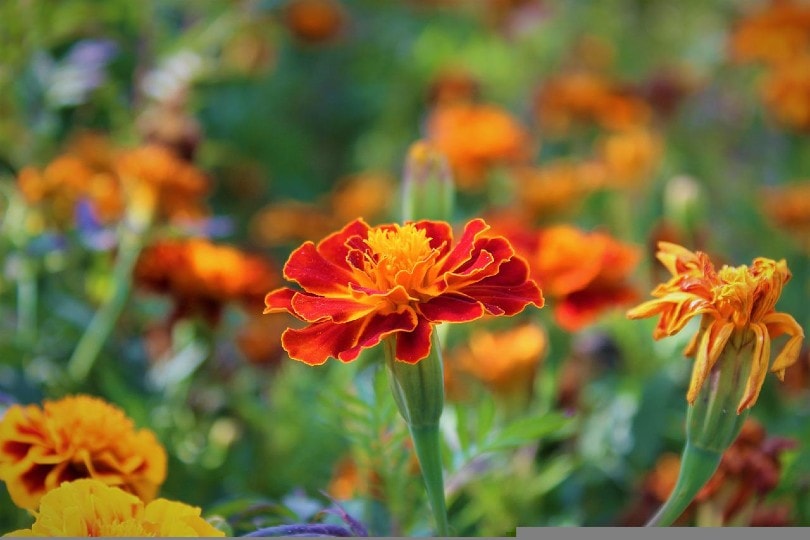
| Flower Color: | Yellow, Gold, Orange, Mahogany |
| Plant Type: | Annual |
People practice polyculture for various reasons. Sometimes we explore it if we’re looking to add a splash of color to our spaces. A colorful garden is not only appealing to the gardener but to beneficial insects as well. The kind of insects that are instrumental in pollination, and the elimination of predatory bugs.
Marigold is a colorful plant. But it should only be planted once the kale has started showing signs of germination. In addition to making your garden look lively, it also repels caterpillars, as they loathe their natural scent.
Those looking to plant cucumbers or potatoes should also explore marigolds as a companion plant.
2. White Alyssum Plant
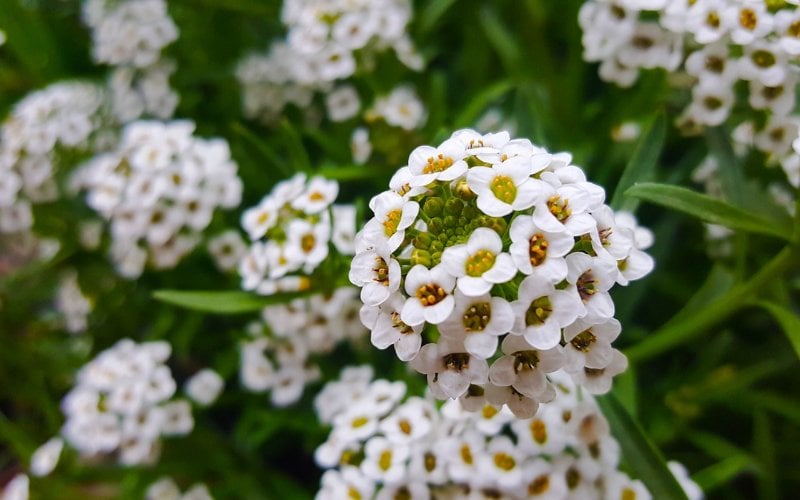
| Flower Color: | White |
| Plant Type: | Annual |
The white alyssum is commonly known as the sweet alyssum. It’s a very passive species, in the sense that it doesn’t fight for soil nutrients, moisture, or anything worth fighting for, when grown next to other plants.
If you’ve been dealing with an aphid problem that can’t seem to go away, this right here is the solution. The sweet alyssum will politely request the lady beetles to pay you a visit, seeing as they love sucking on its scrumptious nectar-rich growths.
Once they are done satiating their cravings, they’ll show appreciation by feeding on the aphids around. And we’ve heard through the grapevine that the adult lady beetle can consume up to 50 aphids per day.
3. Cilantro Plant
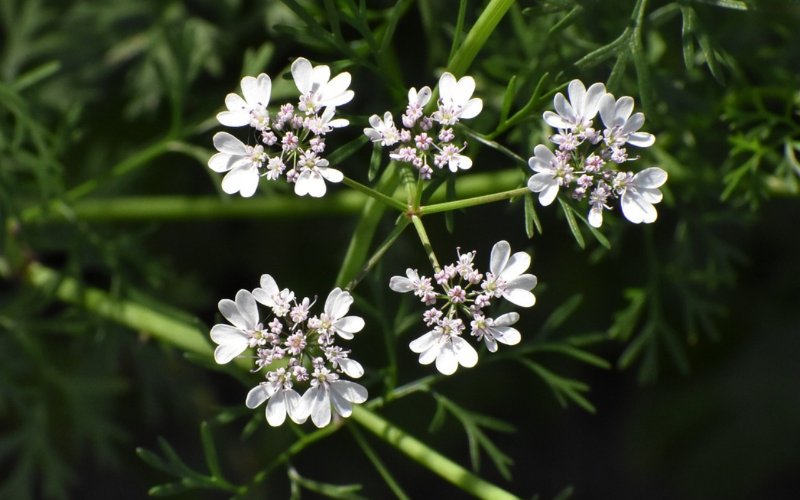
| Flower Color: | Whitish pink |
| Plant Type: | Annual |
We’ve always known it as the cilantro plant, but some people prefer calling it coriander. Regardless, it doesn’t change the fact that it’s still the best summer salsa ingredient, and one of the best companions for kale.
The cilantro species thrives in cool weather—the kind that also supports the growth of kale and several other vegetables. And no, we don’t usually plant it just because we like the way its leaves smell. The smell is incredible for sure, but its ability to completely repel predatory insects is what’s more fascinating.
Its flowers are not as colorful as those of the marigold, but still have the ability to attract beneficial insects such as the parasitoid wasp.
4. Scallions Plant

| Flower Color: | White |
| Plant Type: | Perennial |
The scallion is a member of the allium genus. We’re certain you’re well acquainted with the other members, seeing as they are all prime ingredients in various dishes. It’s practically a challenge to prepare a meal without using any scallion, shallot, leek, garlic, or even an onion.
Scallions are incredible sources of vitamin K. In fact, nutritionists have reiterated on several occasions that they pack double the recommended daily amount, meaning your bones will have more than sufficient minerals to stay strong. Vitamin C, an antioxidant, is yet another nutritional component found in scallion.
The scent and essential oils are the two things that make scallions beneficial to kale. Both of them repel aphids, cabbage loopers, and flea beetles. To add to that, they normally don’t take up too much space in the garden. Thus, giving you the option of adding a third harvestable crop, should you feel the need to increase your total annual yield.
5. Garlic Plant
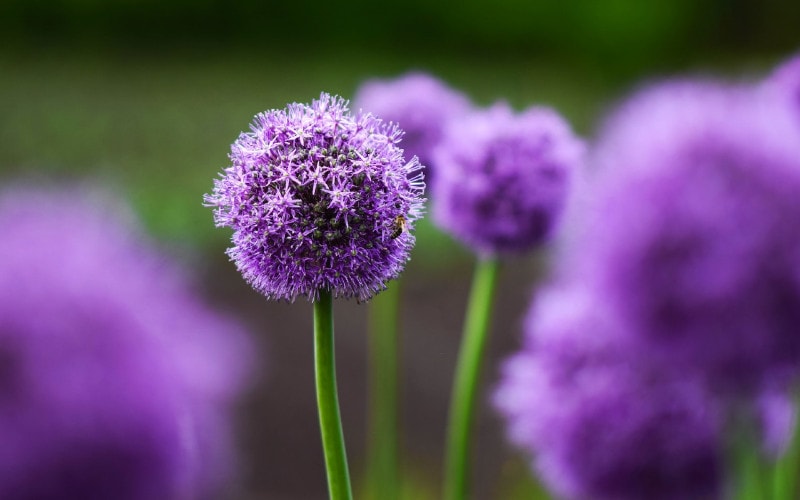
| Flower Color: | Lilac |
| Plant Type: | Perennial |
If we had to choose just one member of the allium family to plant next to our kale, we’d go with garlic. In our opinion, the nauseously strong scent of garlic and its seasonality make it the ideal candidate for this kind of task.
You can tell that smell is so effective at getting rid of insects, seeing as it’s been applied for decades as an organic pesticide. It only takes one whiff for all the pests to scurry away in a hurry, and never look back. The best part is, because this plant spends most of its life underground, you really don’t have to worry about the spacing.
You have to know how to plant it, though. We recommend leaving at least 6 inches of space in between both species. And if you’d like to control the growth of weed around the kale, or if you’re looking for extra insulation, you can mulch some of it at the base.
6. Leeks Plant
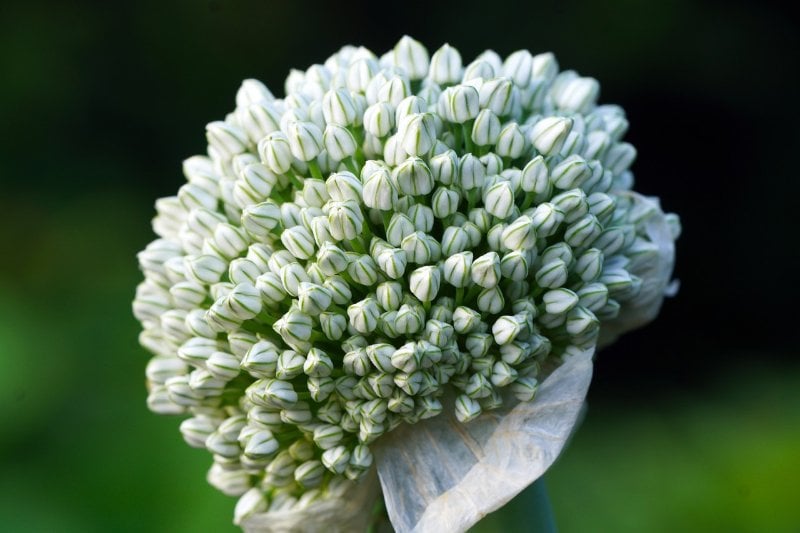
| Flower Color: | Greenish white |
| Plant Type: | Perennial |
Leeks sort of look like green onions (scallions), and smell onion-y as well. That’s what makes them suitable kale companions, for anybody hoping to repel flea beetles, aphids, or any other harmful insect.
You’re advised to explore the leek species in situations where the soil drainage is less than ideal, as they have bulky bases that facilitate soil aeration and drainage. Come to think of it, they might advertently help you steer clear of black rot, which is a brassica disease.
Getting rid of black rot once it finds its way into your garden is never easy because it persists in residues.
Don’t forget that leeks can take up to 5 months to mature. So, if you’re planning to plant them as companion plants, your planting schedule should revolve around the first days of spring. Also, try not to plant them too close to the kale. They ought to be at least 12 inches apart, on either side.
7. Onions Plant
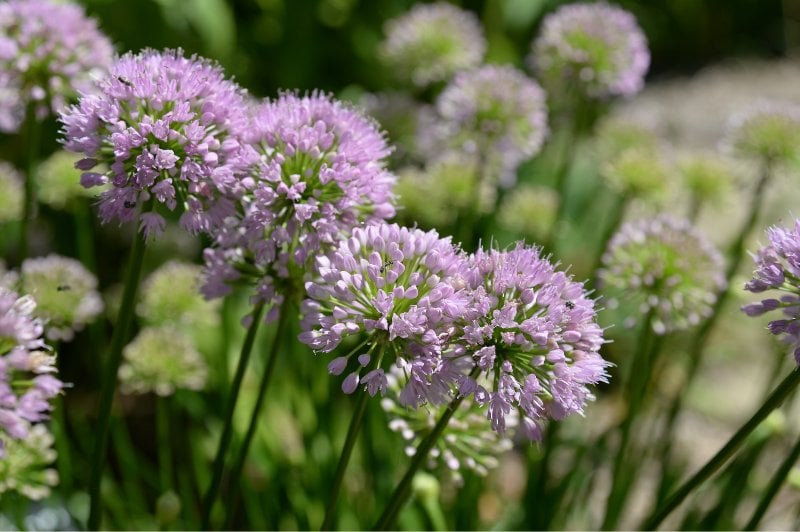
| Flower Color: | Purple, White |
| Plant Type: | Biennial |
From our kitchen experience, nothing beats onions. Even if you consider yourself a novice in the cooking department, adding this ingredient to your dish will certainly give it that je ne sais quoi taste.
You’ll probably struggle a little bit while trying to tuck it next to your kales, but we promise you, the hassle is all worth it. The onion’s insect-repelling property has always made it one of the best brassica family companions.
But they have to be transplanted at the same time, and the spacing should be at least 10 inches on either side. We prefer sandwiching the kale rows in between the onion ones, but if you have a small garden space to work with, you can just plant the alliums around the margins.
8. Nasturtium Plant

| Flower Color: | Orange, Pink, Red, White, Yellow |
| Plant Type: | Annual |
You know, when you visit a farm and ask any farmer what their crops’ number one enemy is, we guarantee you that 9 out of 10 of them will say weeds. That’s because weeds affect the growth of almost every plant considered edible by man. But do you know what their number one enemy is? Yeah, you’re right! It’s nasturtium.
This low-growing species will protect your kale from weeds while ensuring you have enough leaves to supplement the kale production. The flowers are very colorful as well, and liked by various parasitical and predatory insects, ready to help you combat the aphid problem.
9. Dill Plant
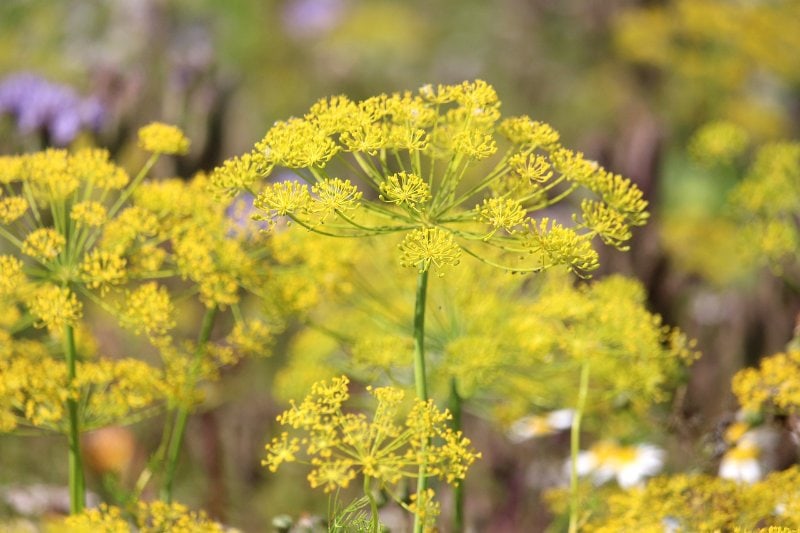
| Flower Color: | Yellow-green |
| Plant Type: | Biennial |
Dill is one of the herbs found in the celery family Apiaceae. They were endemic to the Mediterranean and Eurasia until we started growing them in greenhouses. This species prefers warmer climates and has quite a number of health benefits.
Just like kale, the plant is full of flavonoids. But besides providing the usual benefits, researchers tell us that it can also lower the LDL cholesterol levels in your system. In addition, its nephroprotective activity makes it good for your kidneys—the term nephroprotective is often used to describe anything that can protect our kidneys from harm.
Dill usually attracts the same insects as cilantro. So, you should be expecting hoverflies and wasps as frequent visitors. Their larvae will feed on the eggs of any pest looking to turn your vegetable patch into a home.
10. Sweet Pepper Plant
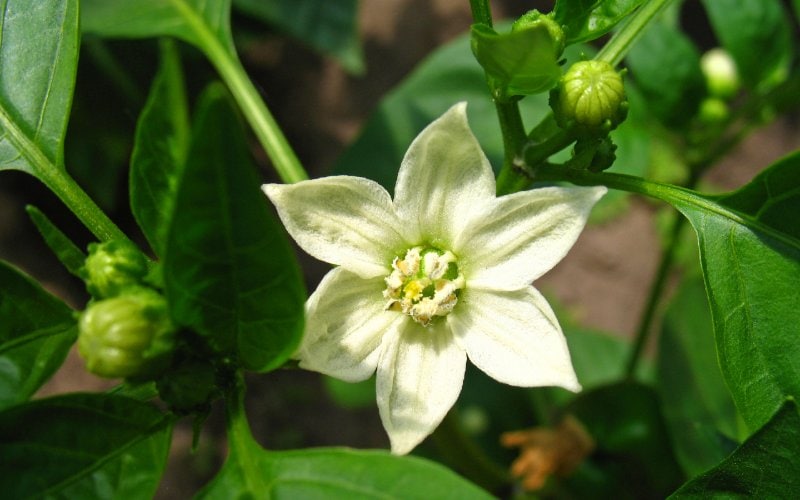
| Flower Color: | White, Purple |
| Plant Type: | Perennial |
Sweet peppers are also called bell peppers. You could still refer to them as capsicums, as that’s their scientific name. These species would be a great addition to your diet, seeing as they contain carotenoids that reduce the risk of cancer and protects your body fats from oxidative damage.
The bells won’t ever compete with your kale in any way as they are light feeders. It’s important to note that “pepper” is actually an umbrella term that represents all the different varieties in this family.
Kale Enemy Plants
Plants that aren’t supposed to be planted next to kale are aptly referred to as allelopathic. Allelopathy, in simpler terms, can be described as the inhibitory or stimulatory effect of a certain plant species on the growth and development of a neighboring variety, through the production and release of a secondary compound.
Allelopathy should not be confused with auto-allelopathy, as the latter refers to the inhibitory or stimulatory effect of a plant species on itself. The most common allelopathic plants are sorghum, pea, and rice. But in the case of kale, it doesn’t like sharing space with the following species:
1. Sunflowers Plant
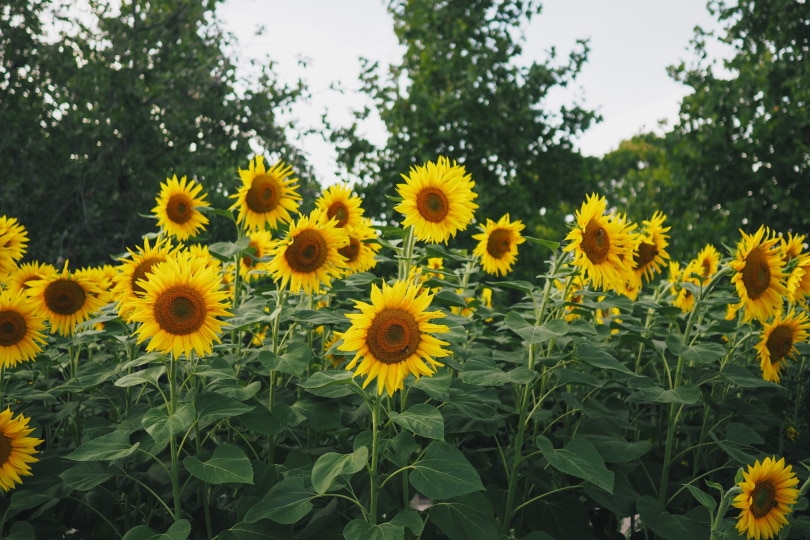
Sunflowers have a very beautiful bloom that can brighten the day of anyone who’s having a bad day. However, what they don’t tell you is, this species has a very nasty secret. They are allelopathic in nature, meaning they give off toxins that have the ability to inhibit the growth and development of some plants, or kill them.
The toxins are majorly phenolic compounds combined with traces of terpenes, and they’re usually released from all parts. Even if you decide to chop off all the leaves and flowers, they’ll still come out of the roots.
2. Strawberries Plant

We should have told you from the onset that kale is a heavy feeder. For them to grow and develop into the perfect plant, they’ll demand soils that are rich in nutrients and lots of moisture. Strawberries also happen to fall into that same category. So, if you plant these two varieties close to one another, and the soil can only cater to the needs of one of them, they’ll end up fighting.
You won’t know what’s going on because there won’t be any signs or symptoms. But eventually, you’ll start realizing your kale is taking too long to get to a certain stage of growth. And the same effects will be felt by the strawberries. So don’t think about planting strawberries near any brassica if you know what’s good for you.
3. Tomatoes Plants
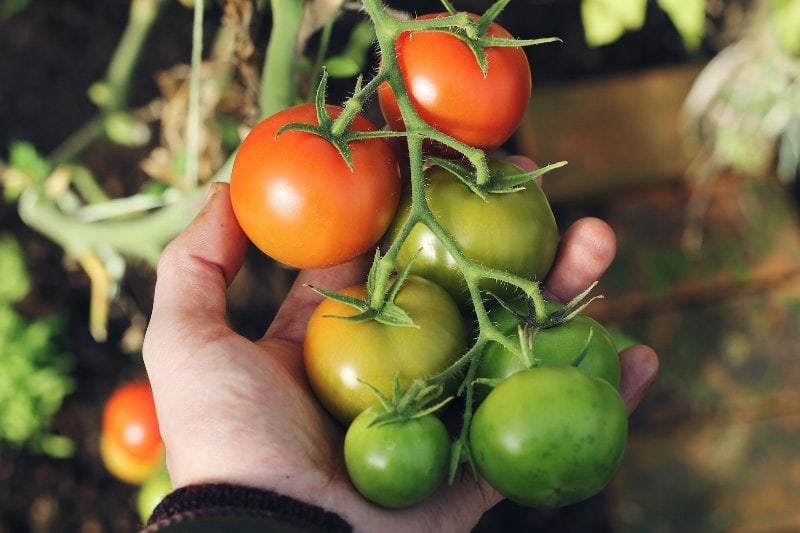
We don’t normally classify tomatoes as heavy feeders, but they also love competing for soil nutrients when planted next to a different variety. Even if the nutrients are more than enough to go around, their physical properties make them more of a liability than an asset.
Kale, like several other plant species, requires adequate amounts of sunlight to make food and grow. Most of our tomato species grow quite tall, meaning they’ll potentially block all the sun’s rays from ever reaching the lower plants.
4. Other Brassicas Species Plants
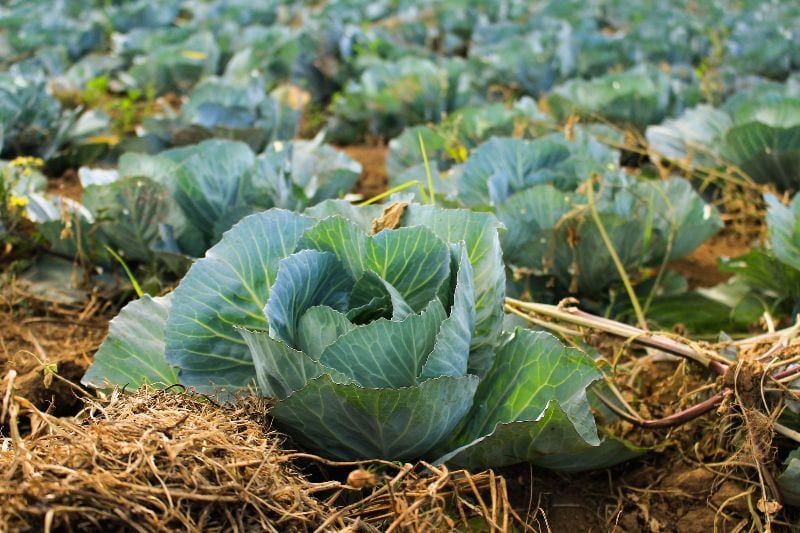
Coming from the same family doesn’t necessarily mean that they get along so well. Pak choi, sprouts, cabbages, and all the other plants in this genus are known to be affected by the same pests and various diseases. For this reason, if you decide to plant all of them in the same space, you’ll be creating a hub for all the brassica pests and diseases ever known to man.
Conclusion
So, what do you think? Are you excited to finally start planting some kale? Maybe spruce up your garden with a different variety? We think you should go for marigold. And we’re not even embarrassed to admit that there’s bias in that suggestion. We’ve always loved how it looks, how it smells, and more importantly, how it complements kale production.
Featured Image Credit: manseok_Kim, Pixabay
Contents


